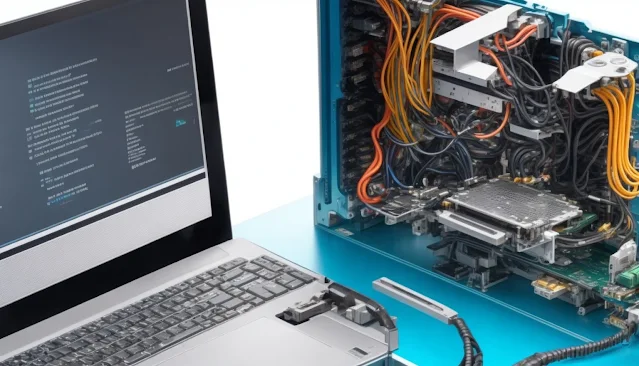In today's digital age, computers have become an integral part of our personal and professional lives. They serve as indispensable tools for communication, creativity, and productivity. However, when computer performance suffers, it can lead to frustration, wasted time, and decreased efficiency. Therefore, fixing computer performance is of paramount importance to ensure optimal functionality, seamless multitasking, and enhanced user experience. Fixing computer performance is a vital undertaking that yields numerous benefits for users in both personal and professional spheres. Enhanced productivity, seamless multitasking, efficient resource utilization, reliability, longevity, and improved user experience are among the valuable outcomes. By investing time and effort in maintaining and optimizing computer performance, individuals can unlock their full potential, streamline their workflow, and enjoy the endless possibilities of the digital world.
If you're looking to boost your computer's performance and increase its speed and efficiency, here are some proven strategies you can try:
- Upgrade Your Hardware: Consider upgrading critical hardware components such as the processor (CPU), random-access memory (RAM), and hard drive (or switch to a solid-state drive, SSD). More powerful hardware can significantly improve performance.
- Optimize Startup Programs: Disable unnecessary programs from launching at startup. This reduces the time it takes for your computer to boot up and improves overall performance. Use the Task Manager (Windows) or Activity Monitor (Mac) to manage startup programs.
- Uninstall Unnecessary Software: Remove unused programs and applications from your computer. They take up valuable storage space and can slow down system performance. Use the built-in uninstaller or third-party uninstaller tools to remove software completely.
- Clean Up Disk Space: Regularly clean up your hard drive by removing temporary files, old downloads, and unnecessary files. Use the Disk Cleanup tool (Windows) or Finder (Mac) to delete unnecessary files and free up disk space.
- Defragment Your Hard Drive (Windows): If you're using a traditional hard drive (not an SSD), defragmenting can improve performance. The process reorganizes fragmented data, making it easier and faster to access. Use the built-in Disk Defragmenter tool in Windows.
- Use a Lightweight Antivirus: If your current antivirus software is slowing down your computer, consider switching to a lightweight alternative that offers good protection without consuming excessive system resources.
- Disable Visual Effects: Turning off unnecessary visual effects, such as animations, transparency, and shadows, can help improve system performance. In Windows, you can access visual effects settings by searching for "Performance Options" in the Control Panel.
- Keep Your Operating System and Software Updated: Regularly update your operating system and software to ensure you have the latest performance optimizations, bug fixes, and security patches.
- Optimize Your Web Browser: Clear your browser cache regularly, disable or remove unnecessary browser extensions, and enable hardware acceleration if available. These steps can improve browsing speed and overall system performance.
- Adjust Power Settings: On laptops, adjust the power settings to prioritize performance over power saving. Select the "High Performance" power plan to ensure maximum system performance.
- Remove Desktop Clutter: Keep your desktop clean and organized. Having too many icons and files on the desktop can slow down your computer's performance. Move files to appropriate folders or create shortcuts instead.
- Disable Unnecessary Background Processes: Identify and disable unnecessary background processes and services that consume system resources. Use the Task Manager (Windows) or Activity Monitor (Mac) to manage running processes.
- Upgrade Graphics Drivers: Ensure your graphics card drivers are up to date. Updated drivers often include performance optimizations and bug fixes that can improve graphics-intensive tasks and overall system performance.
- Increase Virtual Memory (Windows): If your computer is running low on RAM, you can increase the virtual memory (also known as the page file) to provide additional memory resources. Adjust the virtual memory settings in the System Properties dialog on Windows.
- Scan for Malware: Perform regular malware scans using reputable antivirus software to remove any malicious programs that can affect system performance.
- Enable Automatic System Maintenance: Configure your operating system to perform automatic maintenance tasks, such as disk optimization and system cleanup, during periods of low usage.
- Reduce Browser Tabs and Extensions: Having too many open tabs and extensions in your web browser can consume system resources. Close unused tabs and disable or remove unnecessary extensions.
- Upgrade Your Internet Connection: If your computer's performance is affected by slow internet speeds, consider upgrading your internet connection or optimizing your router settings for better performance.
- Disable Automatic Updates During Busy Hours: Schedule automatic updates for software and operating system outside of your regular working hours to avoid performance impact during critical tasks.
- Restart Your Computer Regularly: Restarting your computer can help clear temporary files, refresh system resources, and resolve minor performance issues. It is a simple yet effective way to maintain optimal performance.
By implementing these strategies, you can optimize your computer's performance and enhance its speed and efficiency. Remember to regularly maintain and update your system to ensure ongoing performance improvements.

